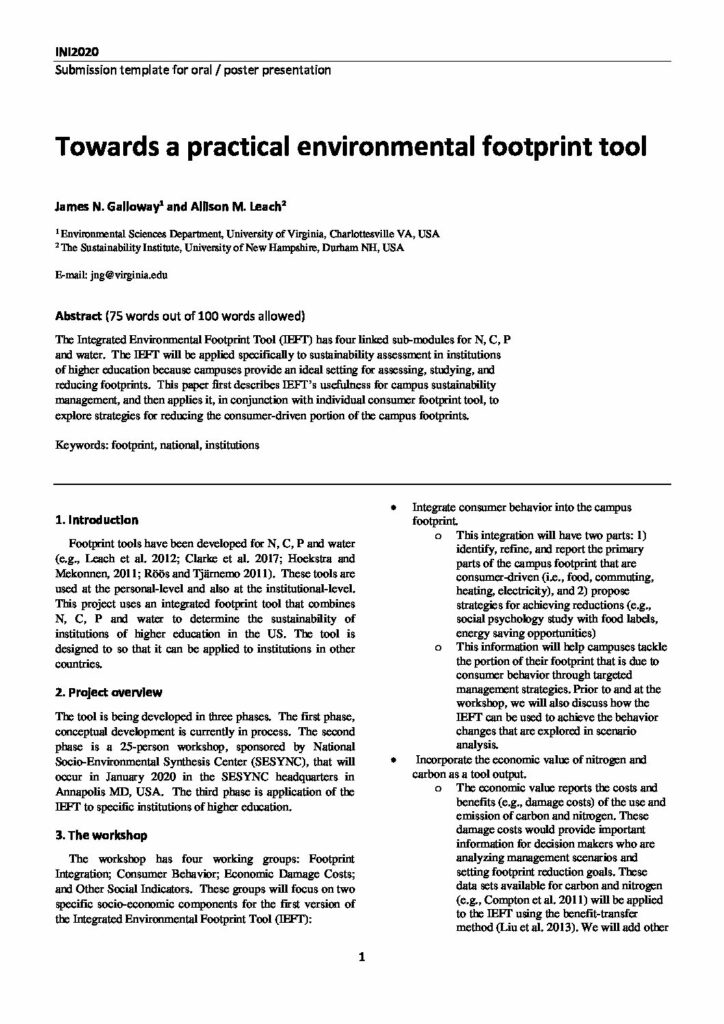Towards a practical environmental footprint tool

The Integrated Environmental Footprint Tool (IEFT) has four linked sub-modules for N, C, P and water. The IEFT will be applied specifically to sustainability assessment in institutions of higher education because campuses provide an ideal setting for assessing, studying, and reducing footprints. This paper first describes IEFT’s usefulness for campus sustainability management, and then applies it, in conjunction with individual consumer footprint tool, to explore strategies for reducing the consumer-driven portion of the campus footprints.
Footprint tools have been developed for N, C, P and water (e.g., Leach et al. 2012; Clarke et al. 2017; Hoekstra and Mekonnen, 2011; Röös and Tjärnemo 2011). These tools are used at the personal-level and also at the institutional-level. This project uses an integrated footprint tool that combines N, C, P and water to determine the sustainability of institutions of higher education in the US. The tool is designed to so that it can be applied to institutions in other countries.
The tool is being developed in three phases. The first phase, conceptual development is currently in process. The second phase is a 25-person workshop, sponsored by National Socio-Environmental Synthesis Center (SESYNC), that will occur in January 2020 in the SESYNC headquarters in Annapolis MD, USA. The third phase is application of the IEFT to specific institutions of higher education.
